Shownotes
Having a map and knowing where you are on that map can make all the difference to your fatigue recovery journey. Anna shares the framework she uses with her clients which includes the different stages of recovery and the most important tests, interventions, supplements and attitudes for each stage.
Useful links:
Website: https://annamarsh.co.uk/
Instagram: https://www.instagram.com/anna_marsh_nutrition/
Fatigue Recovery Quiz: https://app.annamarsh.co.uk/quiz
Where to Start?
Hello, and welcome back to the chronic fatigue and burnout recovery podcast. I am your host Anna Marsh, a trauma-informed functional medicine nutritionist and chronic fatigue survivor. Today I wanted to talk about where to begin or a high-level view of fatigue recovery.
Fatigue recovery is multifaceted. You can do a lot of research and read many things, and it can become very overwhelming very quickly to know what you need to be working on and, more importantly, what order and how to approach it. Albert Einstein said the definition of genius is taking the complex and making it simple, and I’m not going to hold my hand up and call myself a genius. But I would like to simplify this fatigue recovery journey for you by giving you a framework or at least an idea of some roadmap that you can follow on your fatigue recovery journey.
What I’ll share with you today is essentially the framework that I use when I’m working with my one-on-one clients. It’s this sort of big map that I have in my head. When I’m taking a client history, when I’m conversing with my clients, I’m filtering the information that I’m gathering from them through this lens, and then from here, making decisions about where we begin, what we do, how we structure things, how we order things, what tests to take, what supplements to take, and all those other parts of fatigue recovery. I’m a big-picture thinker, that’s my strength, and I think that works well in functional medicine and working with these chronic and complex cases because I can see the big picture, and sometimes that’s much more helpful than getting zoned in on the teeny tiny little details.

I tend to work from the outside in, in the sense that I tend to deal with what I call the big rocks first, and then as we work on each rock one at a time, we can get a little bit more granular on what the specifics of those rocks are. This is a five-step process, which makes it sound super simple and super easy. But in reality, we all know that recovering from a chronic and complex health condition, chronic fatigue, fibromyalgia, or burnout, is anything but simple and easy.
But I’m just going to break it down into this five-step process to simplify it for you and make it easier to communicate. Stage one of your fatigue recovery journey revolves around removing anything that is threatening the system, anything that’s triggering the system, and creating a relative sense of safety. I use the word relatively because it’s very hard for us always to feel 100% safe today.
There’s so much complexity in everyone’s lives. But we want the body to feel relatively safer than before so that some interventions and processes can land in the body. This is where there’s both an art and a science to healing, the sciences, all the technical details, which I’m very well versed in. But then there’s the art, just knowing how much is enough for this person’s body.
How quickly can we move? Do we need to be more gentle? Does this person need more internal resourcefulness? How do we build that as we work together over time? So in terms of removing the threat and creating a relative sense of safety?
In my previous episode, I talked about the cell danger response in a lot of detail. If you haven’t already listened to that episode, it should be the one just before this one, and you can go back and listen there. In that episode, I’ll go into the cell danger response and much more detail.
But for this episode, I’m going to touch on it very briefly, which is to say that the cell danger response is the ancient intelligence of the cell. It is the body’s universal response to threat, and it’s the mitochondria which are energy-producing organelles but also danger-sensing organelles that may sense danger in the environment. They create a series of biochemical changes in the body, suppressing energy production as a self-protective mechanism against a threat. It is helpful in the short term but not beneficial if we get stuck in the long term.
In the first stage of fatigue recovery, removing the threat and creating a sense of safety is thinking about the cell danger response and whether something big is threatening or triggering the system. Mostly, that could be a toxin, mould, mycotoxins, environmental toxins, or heavy metals. For example, it could be some infection like a viral infection, a fungal infection, a bacterial infection, or a parasitic infection, which is continuously triggering the system. In a future podcast, I’ll go into a little more detail and possible things to explore or sometimes, and especially for those who are more just burnt out, it can be chronic stress or trauma which has caused a massive disturbance of the nervous system.
Therefore there is a sense of threat in the body; even though the event has been and gone, the body can still feel stuck in time. If any of these threats are present, the first step is to reduce, remove, and alleviate them so that the body feels relatively safe moving forward. Here, this is where I’ll say, you know, a lot of people not always with chronic fatigue syndrome and burnout tend to be very type personalities.
This was the case of my healing adventure, where I used my inner achiever to project manage my healing journey. Therefore, it was very easy to want to do everything all at once make all the tears, take all the supplements, do the fasting, all the different possible things that one could do, while still clinging on to my old life a little bit, and maybe not fully letting go of some of the things I should have let go of at the time. It was just too much. I wasn’t creating a healing routine, and it’s understandable because usually, people arrive in a state of poor health with a dysregulated nervous system, whether that is nervous system dysregulation from trauma or chronic stresses or just the natural dysregulation in the system that happens when we have an infection or toxin exposure.

From a place of dysregulation, it’s really hard to be grounded, have patience, slow your life down, and do all the things you need to do to ease yourself into healing. It’s just not the place we come at this from when we’re unwell, or at least very few people can come at this come at their recovery from a very grounded, centred space, at least in the beginning, part of the healing journey is actually finding that groundedness and centeredness inside of you and then building routines in your life that support that. That part of stage one is starting to think about what allows you to feel grounded and resourceful and the pace at which you need to live your life to create space for your healing.
This idea of stage one, removing the threads and creating a relative sense of safety, identifies those more technical triggers that need to be removed. But it’s also thinking about what resources, your system, gives you the space and the time to slow down and create an opportunity in your life for healing. Then at the stages, while we may want to think about supporting the nervous system, as an experiencing somatic practitioner, my favourite approach is to use Cymatics.
But there are lots of approaches people can use. You can do restorative yoga, yin yoga, meditation or breath work, or various brain retraining programs. I’ve done all those things, and I think they all help in their way.
My absolute favourites are my go-to favourites have been yoga, time in nature, and then somatic work. So once the body feels relatively safer, it’s time for some other things to land. There’s more openness in the body for us to get traction on some other areas that may need to be addressed.
This will be unique for each person. Some people need to focus more on certain areas than others. But this is where we start to address secondary imbalances and more complex biochemistry, so this is step two.
Here, we’re looking first and foremost, or at least I’m looking first and foremost, at the low-hanging fruit. The low-hanging fruit is where we’re just thinking about the easy things we can start to rebalance. Mostly, that’s blood sugar for many clients and how their diet impacts their blood sugar.
We’ll do an episode specifically on these areas. But for now, know that you know high and low blood sugar levels throughout the day will affect the nervous systems, stress hormones, sex hormones, and energy availability in the cell for energy. We want blood sugar to be nice and stable and at an appropriate level. If it’s not, that’s the low-hanging fruit we want to address; then the other thing I’m considering is digestive health. We want the gut to be functioning well.
What is required is that there can be many benefits just from cleaning up the diet to support better blood sugar control and digestion benefits. But in some cases, we may need to use stool testing and then a little bit deeper into some specific things that may need to be addressed for that person. Also, in addition to that, thinking about oxygenation. So this is where I like to take a full blood count, a ferritin count, and an iron panel and then be given an assessment over someone making healthy red blood cells and getting oxygen to their cells to produce energy.
How are they breathing? Are they mouth breathers? Or do they breathe through their nose? Are they moving their body and allowing that oxygen to get all the tissues? Those are things we would look at in oxygenation.
Those would be the basic things in addition to sleep and rest, which I haven’t mentioned specifically here because I feel that’s more part of the healing routine, making sure someone is sleeping well. If sleep is challenging, more investigations may come later, making sure someone is resting because we think we’re resting on the paper. But when we check in with the body, the body is not physically in a state of rest.
These low-hanging fruit things I’ve mentioned are blood sugar, oxygenation, digestive health, sleep and raising, and reducing inflammation. These are all in my high achiever revival programs. They form part of the membership site.
So that’s always an option available if you’re looking for more support in starting to work on the nervous system, work on some of these low-hanging fruits, and have the support while you do it. The high achiever revival program could be a good option for you. Then we get into step two, B, which addresses more complex biochemistry.
When I say more complex biochemistry, what I’m referring to here is the detox pathways, the mitochondria, your six hormones, maybe your stress hormones cortisol, for example, maybe we need also to give some support to nutrition, maybe there have been some nutritional imbalances created from high stress and poor digestive health. Perhaps the body needs more support around managing inflammation or methylation. This is where we’ve cleared the white noise.

We’ve supported the nervous system and got the body into a healing routine. We’ve removed or aren’t addressing any major threats. We’ve got blood sugar stable, we know the body is oxygenating well, digestive health is improving, and now we’re like, what else? What next?
What are the additional tweaks that we need to go in? This is where personalization is important and functional testing can be beneficial in revealing the individual’s unique weaknesses. In practice, I get to see a lot of tests from all different clients.
But you know, you can have clients with chronic fatigue syndrome, which has been diagnosed, or clients just experiencing fatigue; there are many commonalities. Then it can also be some unique individual differences. Therefore, every support plan I create for my clients can be a little different based on what they have going on in their bodies and lives. This is where we can use functional testing to dig a bit deeper under the hood, find out what’s going on, personalized diets, personalized lifestyles, personalized supplements, and then all be well.
The body’s capacity is improving. The person is feeling more energized, and they’re able to do more. They’re noticing that they have more resilience and resourcefulness in their life. That inevitably brings us to step three.
Step three is what I call the neuro reprogramming piece. I mentioned this here because when someone starts to feel better and have more energy, it can be very tempting to direct that energy and wellness toward the patterns that made them unwell in the past. Here, I’ll break this down a little bit more for you.
Very often, there are personality traits that many people with fatigue experience. Most people don’t have all of them, and some people may not have any of them. But there is usually a combination of several.
These patterns or tendencies might be a tendency towards perfectionism, towards pleasing people, maybe always needing to be in control, and maybe overgiving over helping to get a sense of self-worth through helping others or through one’s achievements. Unless we address what is happening below the surface, it’s very normal for someone; as soon as they start to feel better, they go back to doing whatever they were doing. It might only be a matter of time until they experience a relapse or a setback, and just being completely transparent with you is that I think it’s a little bit of both. We often do start to make changes in these areas.
But we also tend to do a little bit more, maybe, do a little bit too much, realize it, have a little bit of a setback, learn from the setback, and then take the next step forward. So progress is not linear; we don’t manage to reprogram all these personality traits overnight. But it’s just important to understand our tendencies and begin to work with them and address them.
Here I’ll say that many of these personality traits develop, or have developed over time, in an attempt or as coping mechanisms to create a sense of safety. People feel safe when they please others and feel safe when they feel things are in their control. People feel safe, maybe when they’re achieving or helping others.
We want to give the body other ways to feel safe. This is where the nervous system self-care, somatic work, and somatic therapy can help. Because as we change the setpoint of the nervous system and build the window of tolerance and the nervous system’s capacity to handle discomfort and stress, we can rely less and less on these personality traits.
But when we don’t have other tools, and we don’t have other coping mechanisms because we haven’t taken the time to learn them intentionally. We will inevitably default back to our old patterns and behaviours as soon as we have a little more energy. So in terms of what this looks like, this could look like more nervous system work somatic therapy, it could look like brain retraining, it could also just look like NLP and coaching. All of that is offered to my clients, and many programs also offer that.
Also, to say here that this isn’t like a linear process, I’m talking about this as step one, step two, and step three. But when I work with my clients, it’s a little bit more intuitive. We’ll add in the pieces that are needed as they’re required.
There’s overlap between these stages or steps, and we might not always do them exactly in the order I’m describing. But generally speaking, this is the order. Then we have step four, which is building capacity and challenge.
So now we’re in a state where the body feels safe. We’ve removed the major threats, addressed those secondary imbalances and the low-hanging fruit, optimized the unique biochemistry of the individual, and worked on detox and mitochondria and sex hormones, and adrenal hormones, all those things. The body is feeling well.
You’re mindful of your personality traits. You’re conscious of finding new ways to cope and new ways to do things that are more in alignment with your healing and your goals. Now it’s time to do more.
Here I’ll say that I had a conversation with one of my clients, and she said, “I thought one day I would just wake up and feel good, and then I would be able to do the things I wanted to do.” The reality is that we have small energy changes over time. This is generally speaking because it can be different for everyone.
As we experience these more changes in energy over time, we’ve gradually challenged the body to do a little bit more and do a little bit more and do a little bit more. But as we’re doing a little more and doing a little more, we’re still kind of like surfing the edge of what is too much, And what is too little.
What is overstimulating us, and what is understimulating us? People will tend to have a preference for one or the other. Some people are moreover copers and tend to do too much. Some people are copers and tend to do too little.
When we over cope and do too much, we overload the system, and there’s not enough time for rest, recovery, and repair, and therefore there’s a degeneration over time. But when we under-comp cope, we don’t necessarily experience the fullness of challenge and stimulus required to build capacity. Here it’s about finding that delicate balance between doing too much and too little.
Maybe knowing your coping style, are you someone who tends always to take things a little bit too far? I’m that person, or are you someone who always tends to be a little more constricted and protective and do too little because you fear a crash or a setback or doing too much? In the case of both of these, both over copers and under copers benefit from nervous system regulation.
Especially for over copers, when over copers are more somatically connected to their body, they’ll be able to send sooner when they are pushing too far. Sometimes we also push too far as coping mechanisms for our nervous system, just regulation. So a more regulated nervous system means less over-coping as a coping mechanism, if that makes sense.
But under, copers may need to use the nervous system to feel safe and do a little more. We need incremental challenges that feel like a stretch but are not stressful. This could be across all different aspects of life; it could be doing a little bit more exercise, doing a little bit more mental work or your job, or taking on a few more hours at work.

You could be socializing more; one of my clients even said one of her goals was “I’m just going to practice sitting up more” because she had gotten into the habit of lying down to rest. She realized, “I probably don’t need to be lying down as much as I am anymore. So I’m just going to practice resting, but I’m going to risk setting up.” And that was her capacity-building challenge for a month, and she just said, “I’m going to sit up more, and I’m going to read books. So I have the mental and postural challenges of standing up.”
So it can be something as small as that, or bigger things like getting into cold water immersion or heat stress, fasting, or hypoxia when we modulate oxygen availability. There are lots of different ways. But essentially, you want to safely build the system’s capacity because that’s how we get stronger.
Any athlete will tell you that. If you want to run a marathon, you train for it by progressively overloading the body. Suppose you want to lift really heavy weights. In that case, you train for it by progressively lifting heavier and heavier over time while supporting the body and giving it the nourishment it needs for rest and recovery.
This step is about finding that balance of how I can challenge myself in a way that still allows me to recover and make progress. Then we get to the final step, which is preparing to be well because when you have been through such a big thing, there’s such a big recovery journey; there can be so much involved here. Sometimes even well-being and being able to do what we want without limits is the ultimate goal.
That can feel scary. There can still be a lot of constriction and fear in the body from the trauma of being unwell. Maybe it can feel safe or unsafe, should I rather say, to fully embody your wellness.
This is where self-sabotage can creep in. Sometimes there are benefits to being unwell. Sometimes it’s easier to set boundaries with people because you say, “Oh, I don’t have this condition, and I can only do so much; therefore, I can’t attend this event or that event or whatever it might be.”
But sometimes, when you have full health and well-being, you may still not want to do those things. But now you have to say no because you don’t want to; you don’t have your illness to fall back on. That can be a benefit to staying unwell, and so self-sabotage is sneaky.
But ultimately, self-sabotage creeps in when we have what is known as a secondary gain. There is a gain to staying where we are and a perceived loss to fully realizing our goal, health, or well-being. This is where it can be really helpful to explore for yourself through journaling or working with a practitioner.
But what do you need to do to fully realize your wellness and even jot down what I am afraid of? If I was to be well, what would I be afraid of? What will be hard for me? Why wouldn’t I want it? Those are questions we don’t often take the time to explore but can be valuable.
It can also be really valuable to set goals and ideals for what you want your new healthy life to look like. Because it doesn’t have to look like your old life, it can look like something completely different. There may be lessons and learnings from your recovery journey that you want to carry with you into your new healthy and well life.
If we don’t set those intentions, and we don’t get clear on our boundaries and our wants and don’t want, it can be very easy to get sucked back into a life that we don’t want. So to recap, as we wrap up for today, on those five stages or five steps. Step one was to remove the threats in the body and create a relative sense of safety which involves creating a healing routine and supporting the nervous system.
We had steps two A and two B, which addressed more complex biochemistry and the low-hanging fruit, essentially the secondary imbalances created by the body being threatened for so long. Then step three is that neural reprogramming work. Step four is building capacity with health challenges. Step five is preparing to be well. So I hope you have found that insightful and useful today.
As always, if you found this episode useful or you know somebody who would enjoy listening to it, please feel free to share. Also, don’t forget to leave a review because your reviews help others find this information, and you can spread the love. I will see you in the next episode. You have a wonderful fatigue recovery day.








